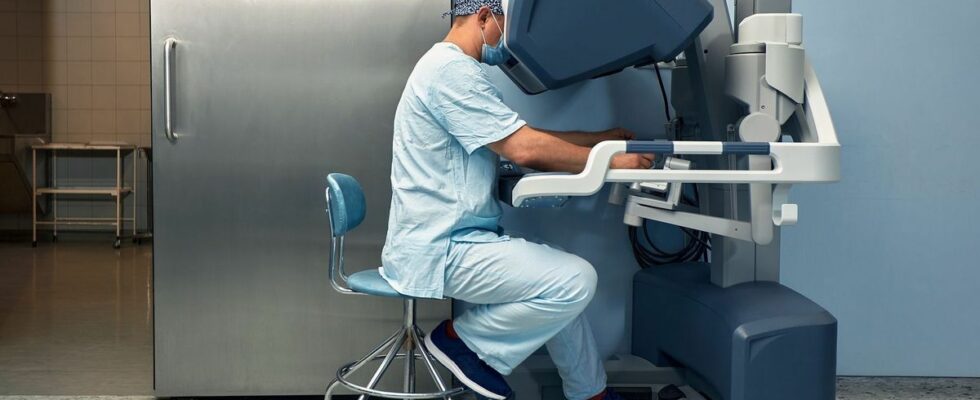Published on
updated on
Reading 2 min.
During a urology conference in Bordeaux in September, two surgeons carried out an operation on patients who were in China using robots. An impressive technique that would address many challenges in the future.
The patient is in China, but the surgeon’s hands are in Bordeaux. During a congress in Gironde organized in September by the section of the European Association of Urology specializing in robotics, two surgeons, including a Frenchman, demonstrated how they were able to operate on their patients 8,700 km away, without clutter.
Two urology operations carried out in Beijing
The first operation was carried out on September 11 on a 37-year-old patient located in Beijing to remove a 3.5 centimeter tumor from his kidney. Professor Alberto Breda, a Spanish surgeon operated via a robot from Bordeaux, “in a suit and tie he likes to point out.
Then, it was Doctor Richard Gaston, a urologist in Bordeaux, who delivered impressive images of a 1h10 operation on a 51-year-old man suffering from prostate cancer, also in Beijing. In the calm of its “control” room, it indicated to the robot on site the movements to be carried out in the patient’s body.
In both cases, the Fundació Puigvert, the Barcelona health center, and the Madrid urology center where the two doctors work have indicated that the patients are recovering completely normally.
Telesurgery made possible via an internet connection
How is it possible to operate thousands of kilometers away? On BFMTV, Richard Gaston explains that he needs a reliable internet connection, and his efficient robots.
“The movements of the surgeon’s hand are reproduced by instruments that are inside a patient who, in this case, was in Beijing. Between the movements of the surgeon and the movements of the instrument inside the patient, there is simply a delay of 130 milliseconds, which is practically imperceptible to the naked eye.
Telesurgery as it is called is not new. Already in 2001, Professor Jacques Marescaux ordered from New York an ablation of the gallbladder on a patient in Strasbourg. On the other hand, this is the first time that she has intervened at this distance. And yet,” We had the complete impression of operating at home and being two meters from the patient,” the surgeon adds calmly.
Bringing together skills, through telesurgery
Beyond the technological prowess, this announcement demonstrates numerous advantages. The Chinese patient, for example, was able to benefit from the expertise of the Bordeaux doctor, which he did not have at home. “I was really able to carry out a sophisticated intervention to allow the patient not to lose his urine, to preserve his sexuality and above all to be cured.” says Richard Gaston.
The technique could also help less experienced surgeons, to receive a “helping hand” from a mentor, wherever they may be. Finally, this type of remote operation would allow low-income countries to invest and train surgeons remotely for the long term, “equalize health care disparities” mentioned in the press release.
